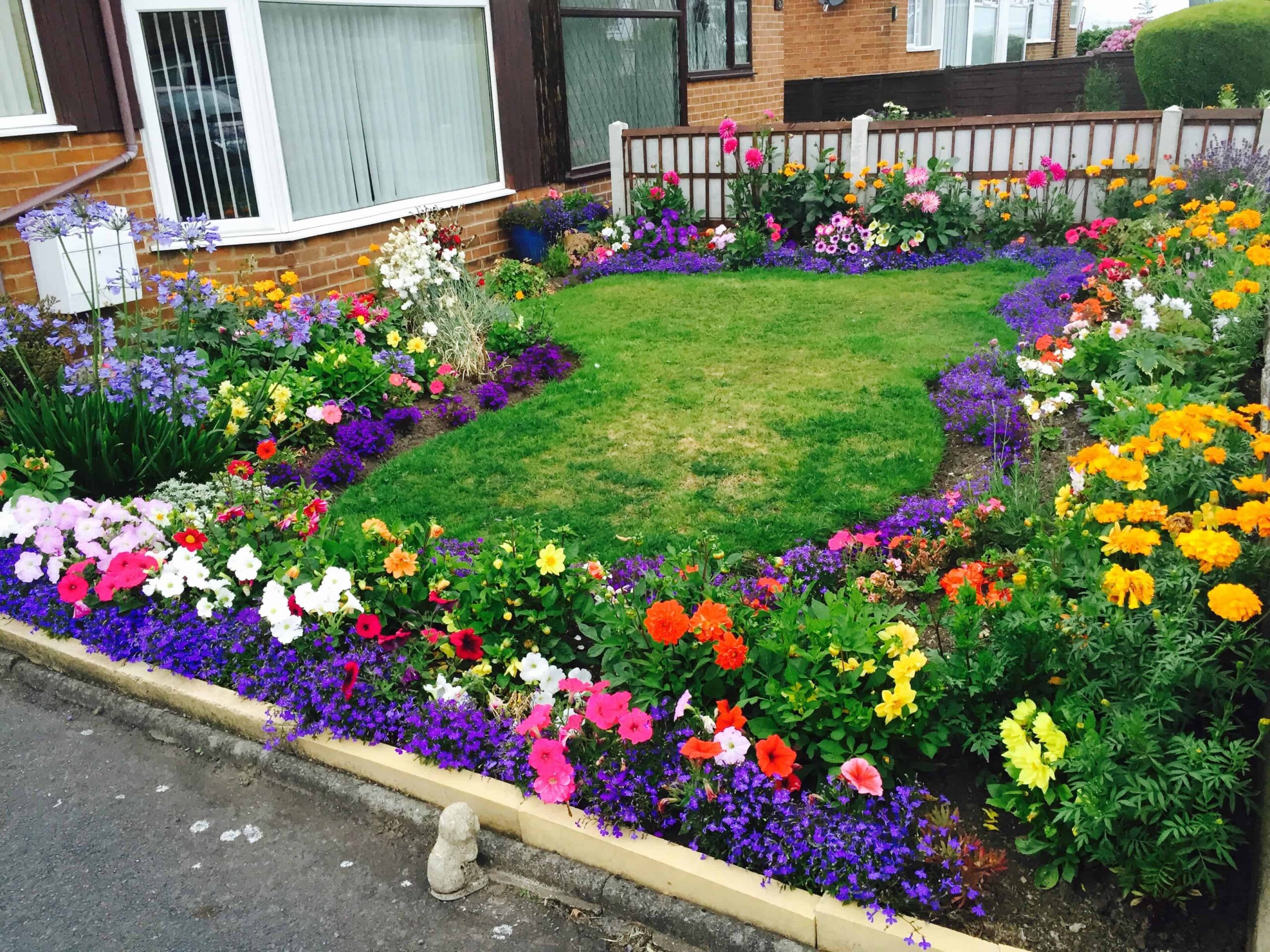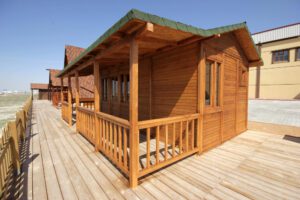Your home’s front yard is its handshake with the world, and nothing makes a better first impression than beautifully designed flower beds.
Whether working with a sprawling lawn or a compact urban space, strategic flower bed designs can transform your property’s aesthetic in just one growing season.
Even novice gardeners can create magazine-worthy displays by understanding key principles of color, texture, and plant selection.
The secret lies in choosing the right plants for your climate and arranging them in visually pleasing combinations.
Get ready to discover 15 expert-designed flower beds in front of house concepts that will change your front yard into the envy of the neighborhood.
From timeless classics to innovative modern designs, these concepts will help you create a front yard that blooms with personality all year.
1. Foundation Planting for Curb Appeal
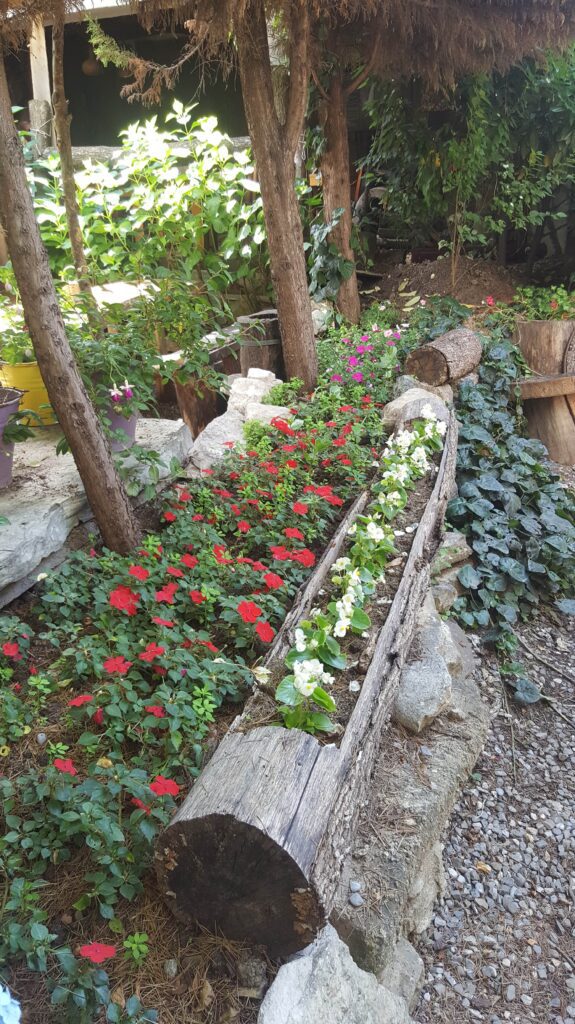
Create instant architectural harmony by planting a mix of evergreen shrubs and flowering plants along your home’s foundation.
Start with structural elements like boxwoods or yews spaced 3-4 feet apart, then fill between them with seasonal colors from azaleas, hydrangeas, or knock-out roses.
Maintain a graduated height from the tallest near the house to the shortest at the front edge for perfect proportion.
This living frame enhances your home’s lines while softening harsh transitions between structure and landscape.
2. Charming Cottage-Style Flower Beds
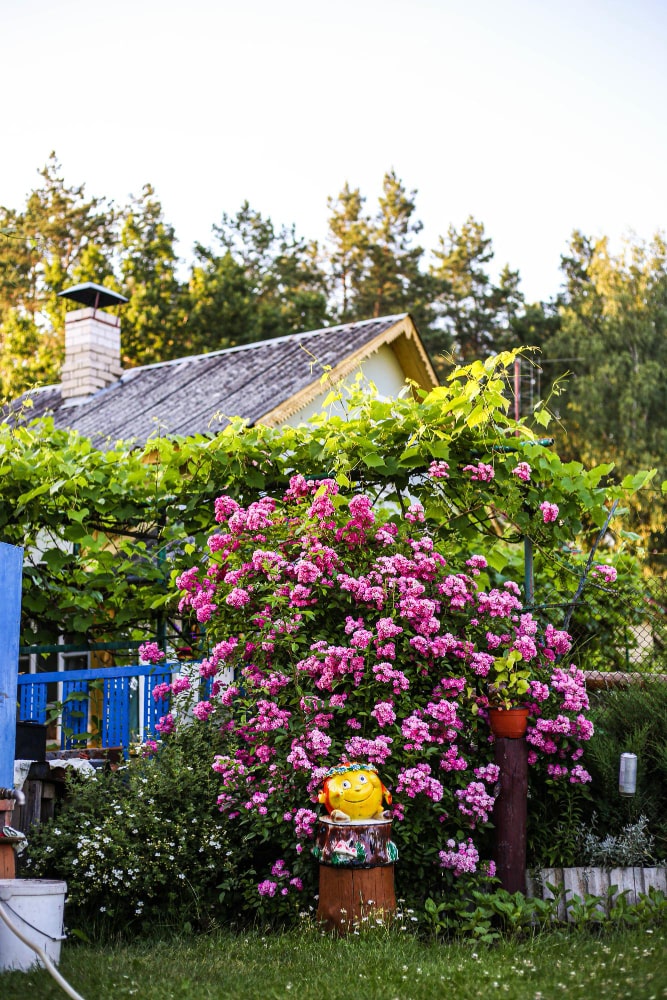
Embrace the romantic chaos of an English garden with densely planted, free-form beds overflowing with old-fashioned favorites.
Combine vertical elements like delphiniums or hollyhocks with mounding plants such as peonies and Shasta daisies.
Underplant with creeping phlox or alyssum to fill gaps and allow some self-seeding annuals like cosmos to naturalize for that authentic cottage feel.
The key is layering plants in odd-numbered groups rather than straight lines.
3. Modern Minimalist Bed Designs
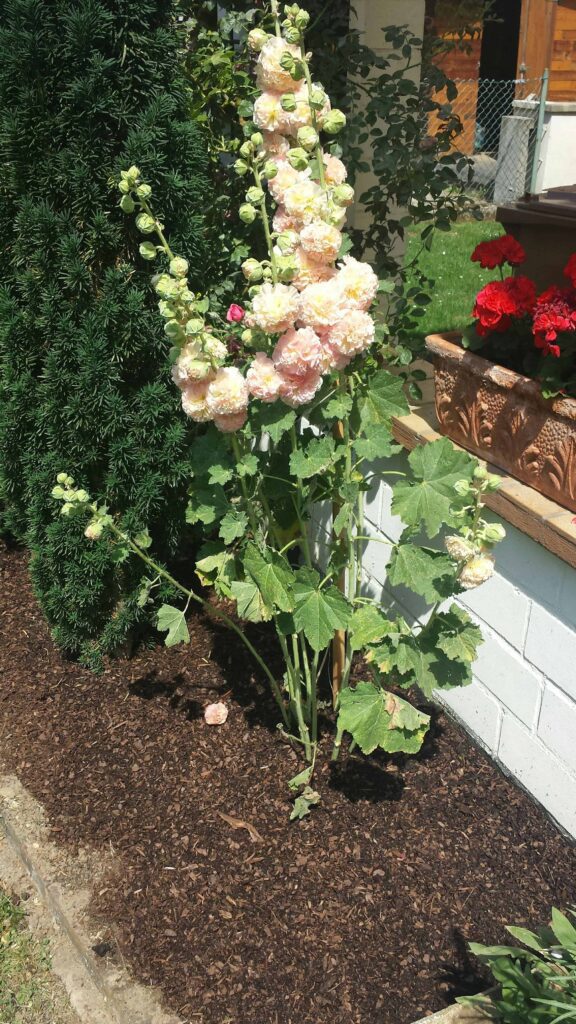
Achieve sleek sophistication with restrained color palettes and architectural plant forms.
Try a monochromatic scheme of white-flowering plants against dark mulch, or pair blue fescue grass with black mondo grass for dramatic contrast.
Use repetition of 3-5 specimen plants like agave or ornamental alliums spaced evenly for rhythm.
Edge with crisp metal or concrete borders to maintain sharp lines that complement contemporary home styles.
Related Content: 15 Dazzling Front of House Landscape Ideas
4. Drought-Tolerant Flower Bed Ideas

Create water-wise beauty with native plants adapted to your region’s dry periods.
Try a succulent garden in Western climates featuring aeoniums, echeverias, and sedums interspersed with decorative gravel.

Purple coneflower, butterfly weed, and Russian sage offer weeks of blooms with minimal watering for Eastern gardens.
Always group plants with similar water needs and use 2-3 inches of mulch to conserve soil moisture.
5. Year-Round Color Strategies Flower Beds in Front of House
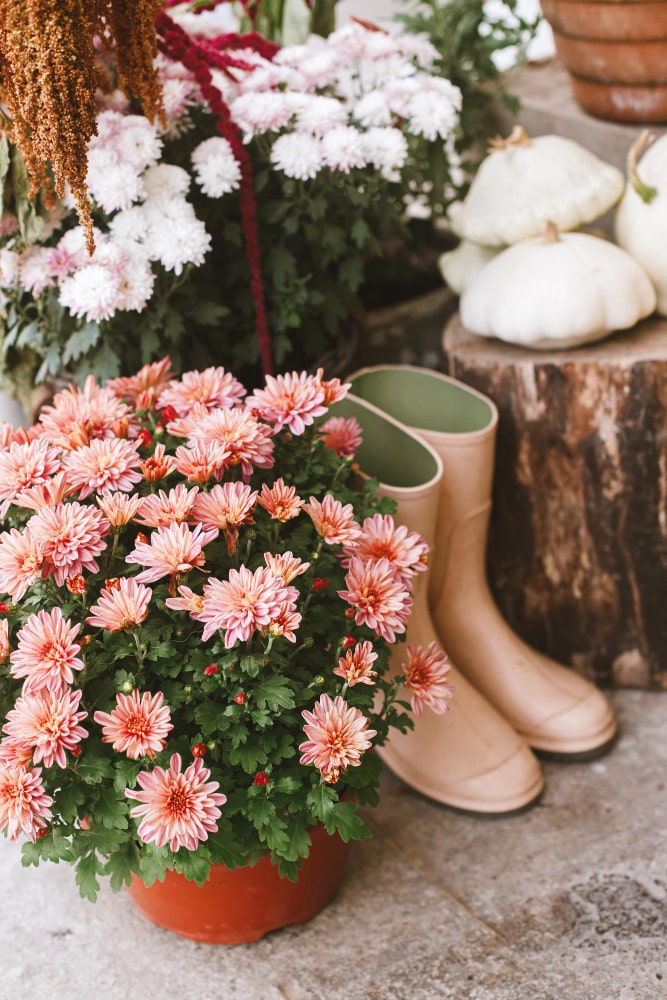
With this four-layer approach, design your beds to perform in every season: spring bulbs (tulips, daffodils) planted beneath summer perennials (daylilies, coreopsis), surrounded by fall-blooming asters and mums, with winter interest from red-twig dogwood or evergreen groundcovers.
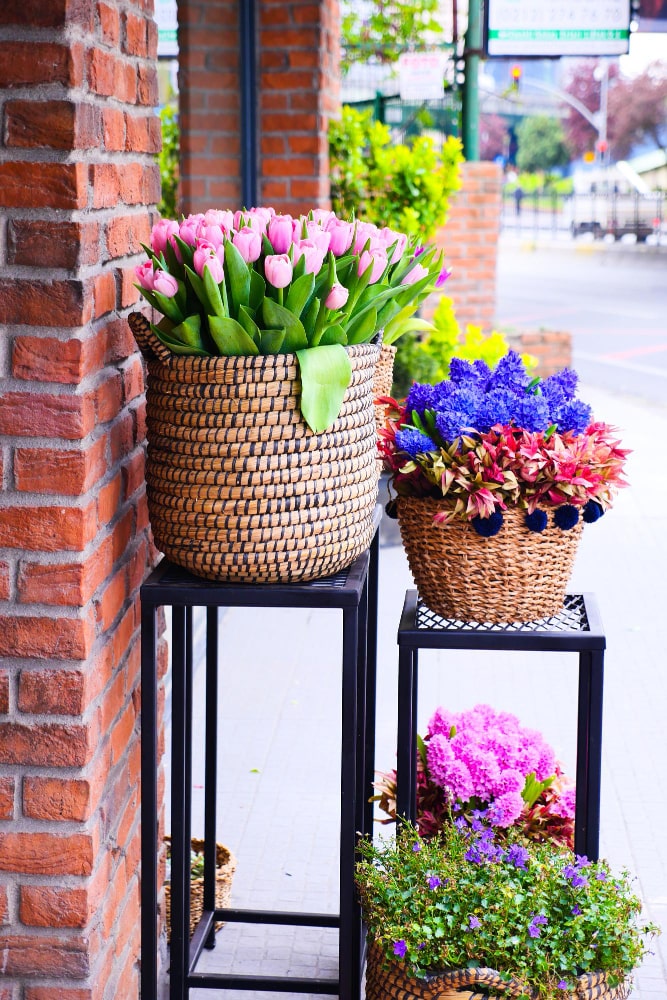
Add decorative elements like ornamental cabbage for cold months, and you’ll never have a colorless front yard again.
6. Shade-Loving Bloom Solutions
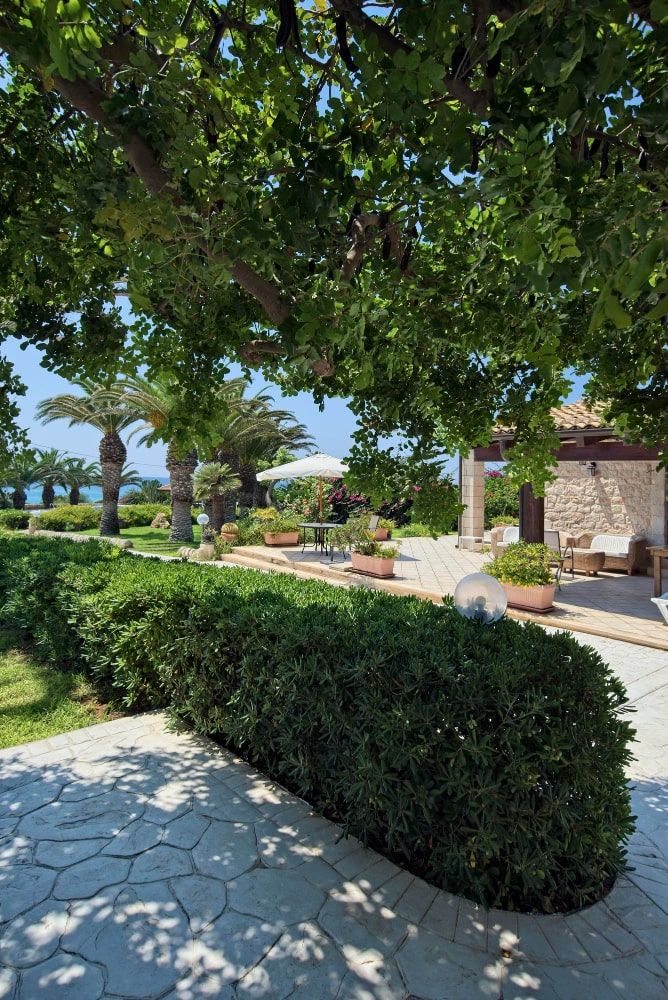
Turn problem-shady areas into assets with the right plant combinations.
Plant taller astilbes or foxgloves in the back, medium-height hostas in the middle ground, and creeping Lamium or sweet woodruff as edging to create depth.
For color in deep shade, rely on foliage plants like caladiums, coleus, and coral bells that offer vibrant hues without direct sunlight.
7. Sloped Yard Flower Beds
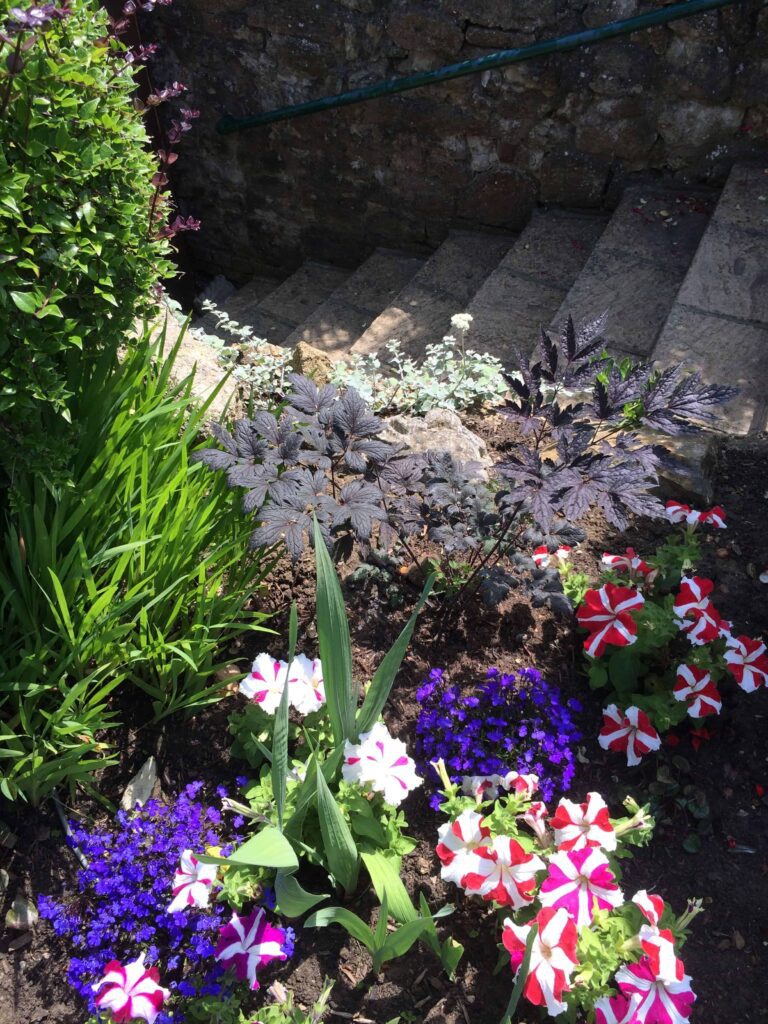
Conquer challenging grades with terraced beds built from natural stone or landscape timbers.
Plant erosion-controlling groundcovers like creeping juniper or vinca minor between showy anchor plants.
On steep slopes, create a “dry creek” bed with river rocks and drought-tolerant plants like lavender that enjoy good drainage.
Always orient plants horizontally across the slope rather than vertically to prevent washouts.
8. Pollinator-Friendly Garden Designs

Support local ecosystems with nectar-rich plants arranged in drifts of at least 3-5 of the same variety.
Include early bloomers (crocus), mid-season (bee balm), and late flowers (sedum) to feed pollinators all season.
Add a shallow water source and leave some bare ground for ground-nesting bees.
Avoid hybrid flowers with double blooms that often lack nectar.
9. Low-maintenance perennial Beds
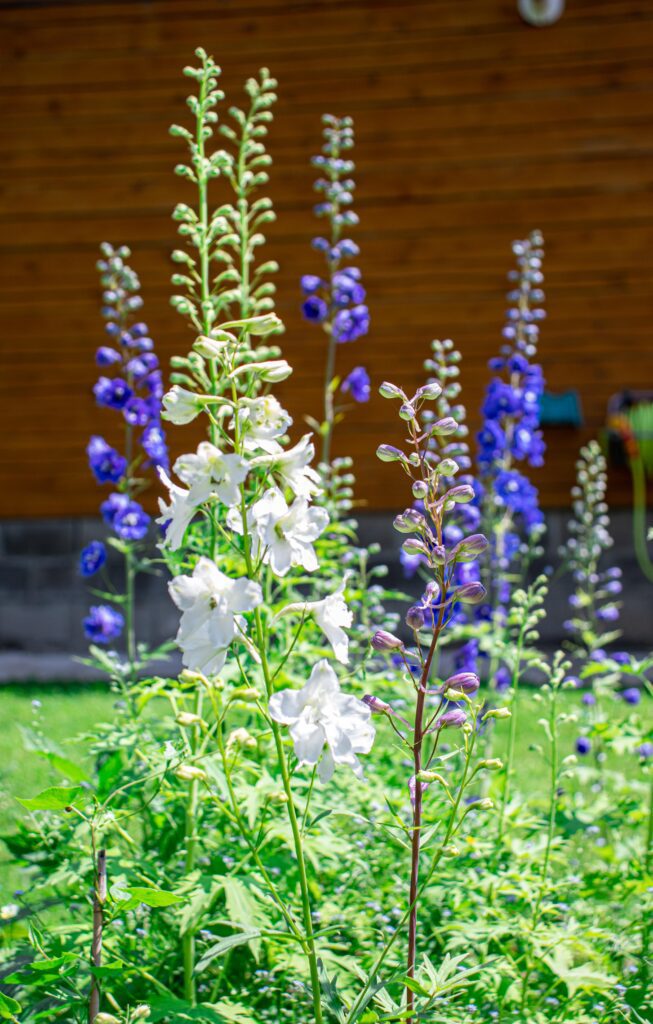
Invest in tough, long-lived plants that multiply over time. Start with a backbone of reliable performers like catmint, salvia, and coreopsis that bloom for months.
Add a structure with ornamental grasses that provide winter interest.
Top with 3 inches of shredded bark mulch to suppress weeds, and you’ll only need to tend these beds a few times a year.
10. Edible Flower Bed Ideas
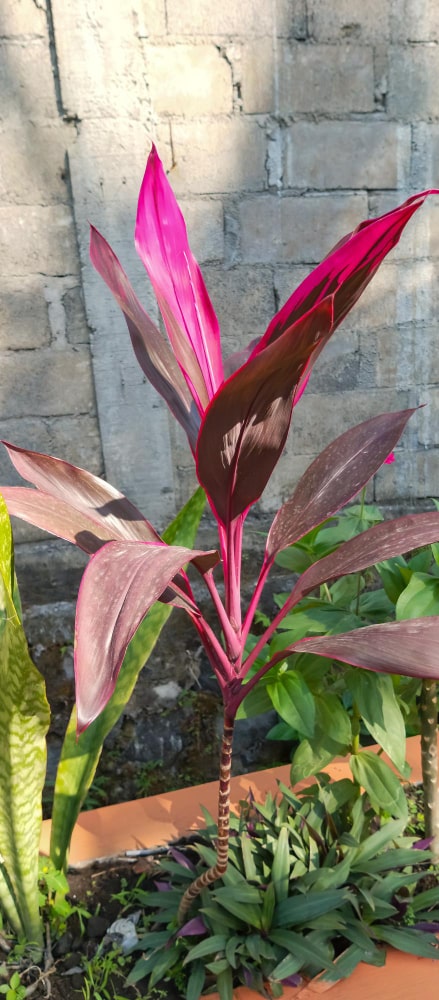
Combine beauty and function with artfully arranged food plants—plant purple basil as a border, rainbow chard as a focal point, and strawberries as a ground cover.

Add height with espaliered fruit trees against walls. Incorporate edible flowers like nasturtiums and calendula, which bloom all season and are perfect for salads.
Always group herbs and vegetables with similar sun/water needs together.
11. Small-Space Flower Bed Tricks
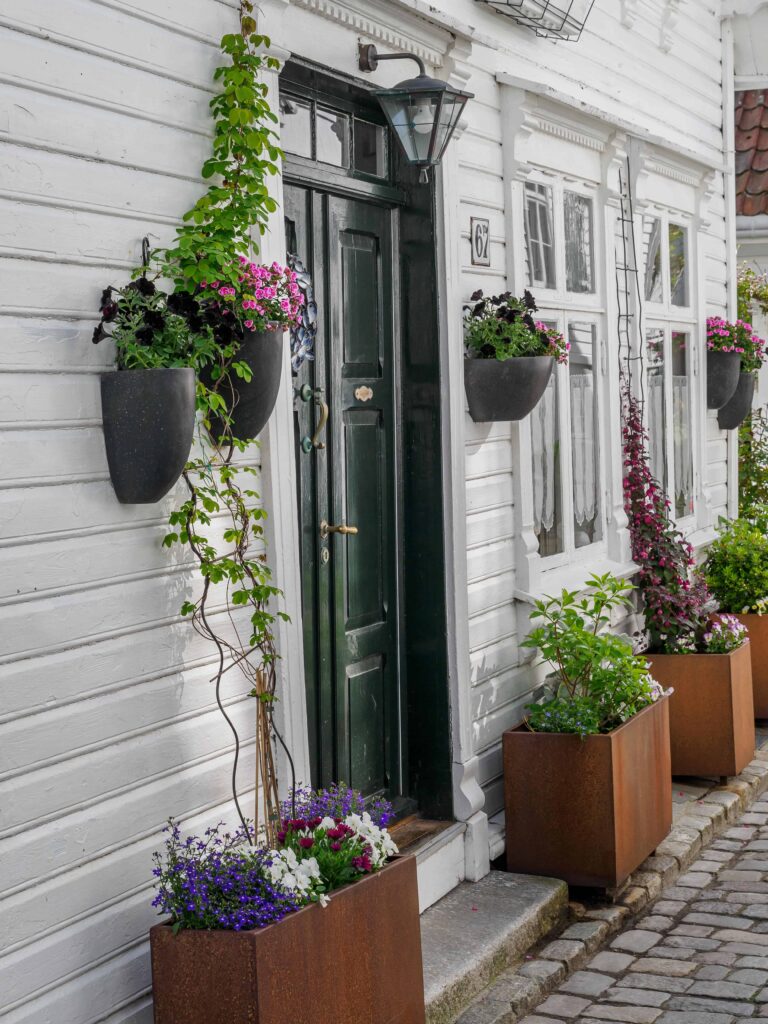
Maximize limited areas with vertical elements like obelisk-climbing clematis or wall-mounted pocket planters.
Use dwarf varieties of favorite plants (miniature roses, compact hydrangeas) that stay proportionate to the space.
Place brighter colors in front and cooler tones farther back to create the illusion of depth. When planted thoughtfully, even a 2-foot-wide strip can dazzle.
12. Fragrant Entryway Garden Ideas
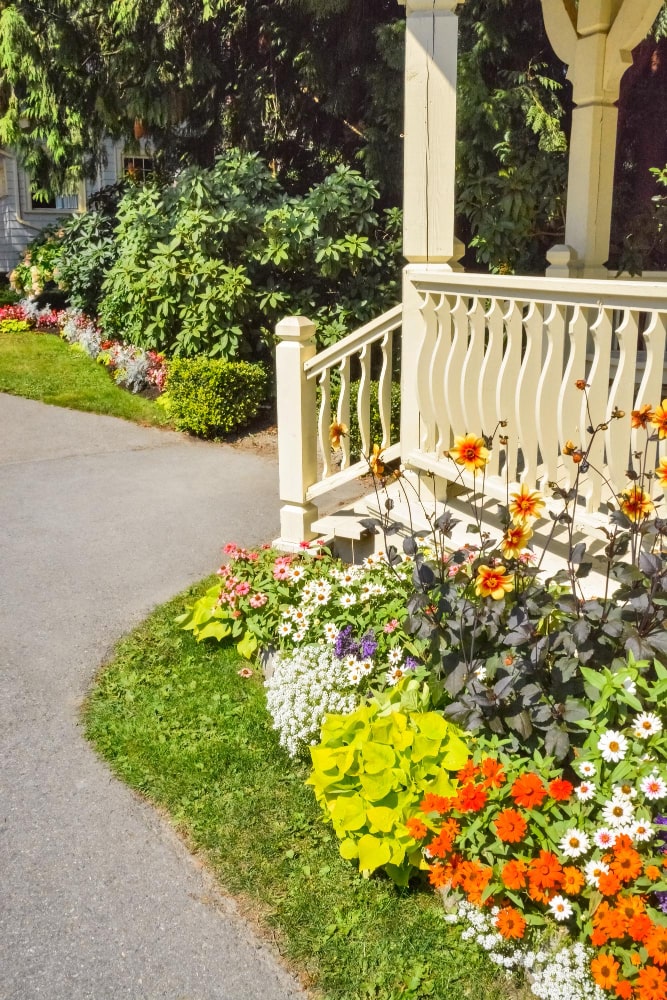
Engage the sense of smell by planting highly scented varieties where people pass closely. Line walkways with lavender or thyme that releases fragrance when brushed.
Frame doorways with gardenias or sweetbox that perfume the air. Include night-blooming plants like moonflowers near seating areas for evening enjoyment.
Position strongly scented plants upwind from your outdoor living spaces.
13. Bold Foliage-Focused Designs
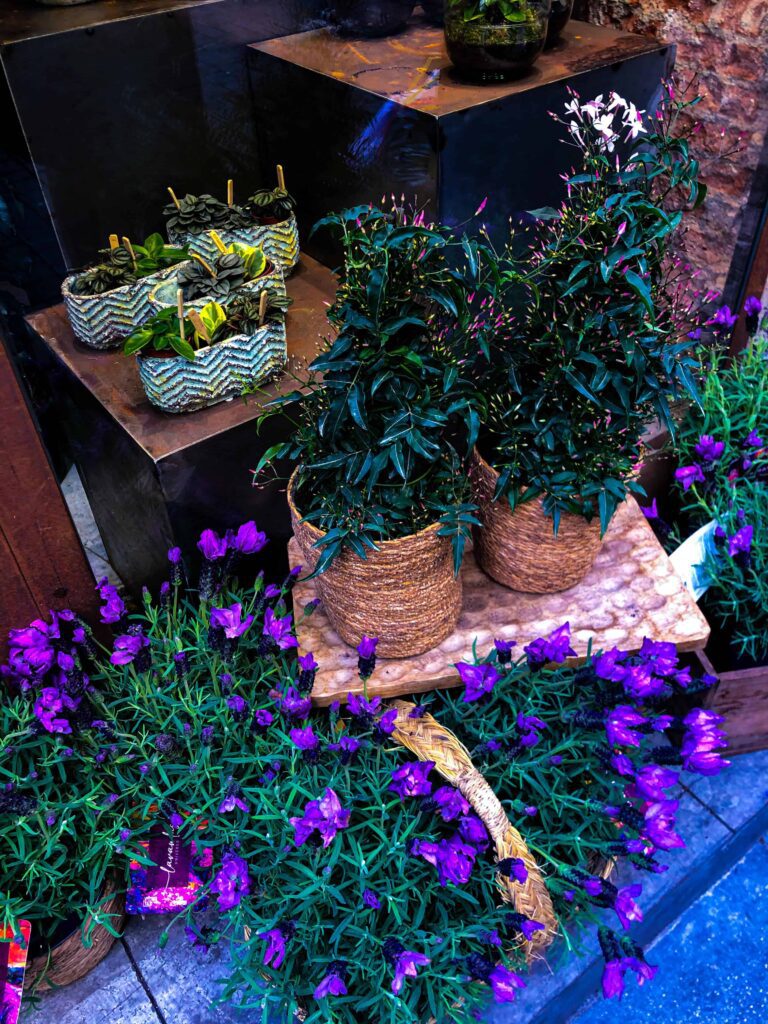
Make leaves the stars with dramatic combinations like purple heuchera against golden Hakone grass.
Use large-leaved plants (hostas, Rodgers) as focal points, with finer-textured ferns or grasses for contrast.
Tropical-looking cannas and elephant ears create vacation vibes in temperate climates when treated as annuals.
Remember, foliage provides color long after flowers fade.
14. Pathway-Framing Flower Borders
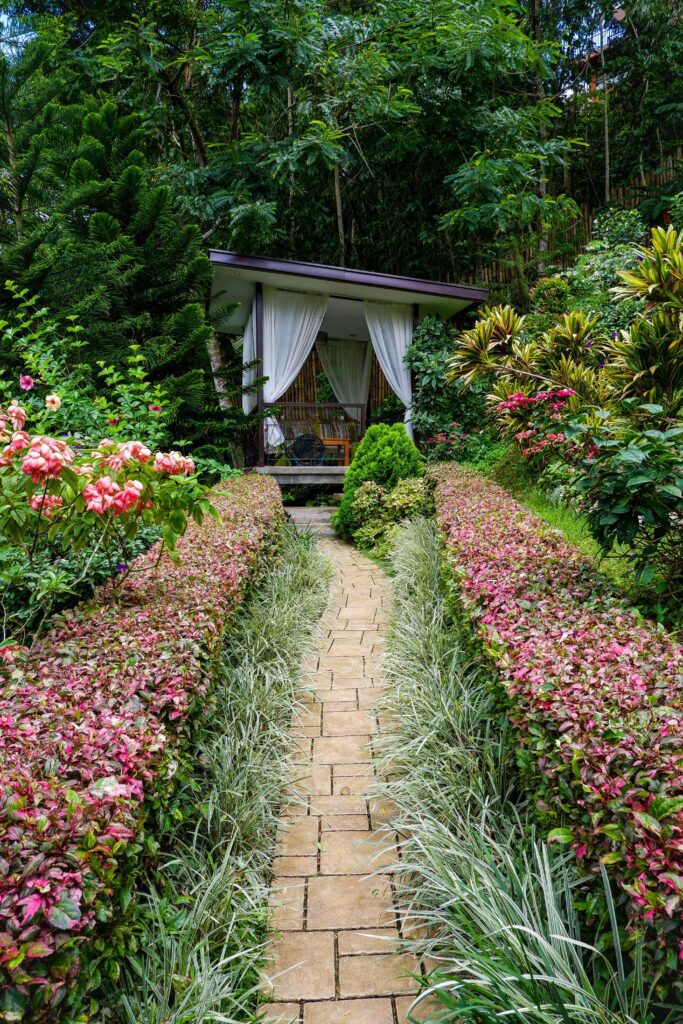
Guide visitors with beds that define walkways beautifully. For formal paths, use low, clipped hedges of boxwood or lavender.
Cottage-style walks look charming, edged with billowing nepeta or catmint. Always allow at least 18 inches between path edges and plants for maintenance access.
Repeat the same plants on both sides for cohesion.
15. Winter-Hardy Bloom Arrangements
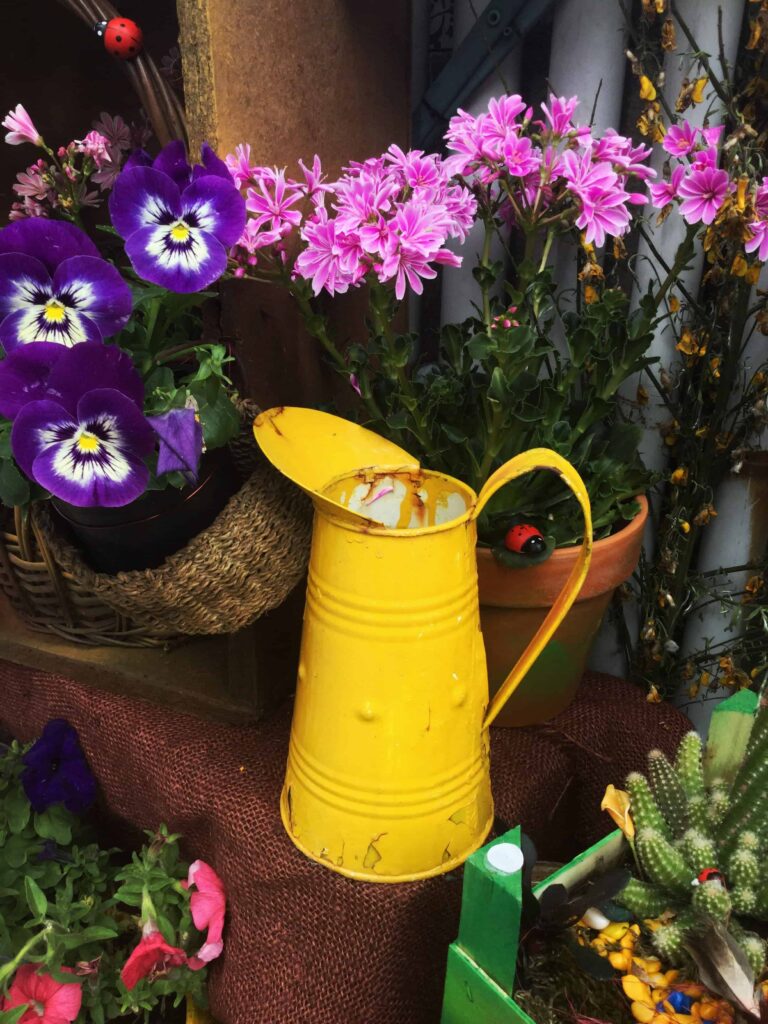
Keep your front yard lively during cold months with plants that shine in dormancy. Red and yellow twig dogwoods add vibrant color against snow.
Ornamental cabbages and kale thrive in frost. Evergreen hollies and conifers provide structure.
Seed heads of coneflowers and grasses add texture when dusted with frost. Add outdoor lighting to showcase these elements after dark.
Final Thoughts – Creating Your Flower Bed Masterpiece
Your front yard flower beds offer endless opportunities to express creativity while enhancing your home’s architecture.
Remember that great gardens evolve. Start with a solid framework of reliable plants, then experiment with new varieties each season.
Pay attention to how sunlight moves across your space through the year, and don’t be afraid to move plants that aren’t thriving.
The most important tip? Choose plants that bring you joy whenever you see them. After all, you’re the one who gets to enjoy this living artwork every day as you come home.
Whether you prefer meticulously manicured or wild and free, your flower beds should reflect your style while welcoming everyone visiting.
Ready to get your hands dirty? Share which flower bed idea inspired you most in the comments below, or tag us in your before-and-after photos – we’d love to celebrate your gardening successes with you!

